1. Jeju Island: A Journey Through Time and Tradition
Introduction
Welcome to Jeju Island!
Welcome to Jeju Island, a picturesque paradise located off the southern coast of South Korea!
As soon as you arrive, you’ll be struck by the island’s stunning natural beauty, from the crystal-clear waters of its beaches to the majestic peaks of its mountains.
Jeju Island is a place of contrasts, where ancient traditions meet modern conveniences and where bustling cities and serene countryside coexist in harmony. Whether you’re looking for adventure, relaxation, or a bit of both, Jeju Island has something to offer everyone.
Table of Contents
A Brief History of Jeju Island
Jeju Island has a long and fascinating history dating back thousands of years. It is believed that the island was formed by volcanic activity around 1.2 million years ago. The island was first inhabited by humans around 6,000 years ago, and over the centuries it has been home to various kingdoms and dynasties.
During the Three Kingdoms period of Korea (57 BC-AD 668), Jeju Island was part of the Tamna kingdom, which had strong trade links with China and Japan. In the 10th century, the island was incorporated into the Goryeo dynasty and became an important center for maritime trade.

During the Joseon dynasty (1392-1910), Jeju Island was used as a place of exile for political prisoners and dissidents. The island was also the site of a major rebellion in 1948 when residents rose up against the government’s policies and were brutally suppressed.
Today, Jeju Island is a popular tourist destination known for its natural beauty, rich cultural heritage, and unique local customs and traditions. It has been designated as a UNESCO World Natural Heritage site and is a popular destination for domestic and international travelers alike.
Jeju Island’s Significance to Korea
- Strategic Location: Jeju Island is located off the southern coast of the Korean peninsula and has long been an important strategic location for maritime trade and defense. It has served as a gateway to Korea for foreign influences, including Chinese, Japanese, and Western cultures.
- Cultural Heritage: Jeju Island has a unique cultural heritage that is distinct from mainland Korea. The island’s isolation from the mainland has allowed it to develop its own customs, traditions, and dialect. The island is also home to many UNESCO World Heritage sites, including the Jeju Volcanic Island and Lava Tubes, which showcase the island’s natural beauty and geological history.
- Tourism: Jeju Island is one of the most popular tourist destinations in Korea, attracting millions of visitors each year. The island’s natural beauty, mild climate, and unique cultural attractions draw tourists from around the world. The tourism industry is a major contributor to the island’s economy and has helped to promote Korean culture and heritage to a global audience.
- Military History: Jeju Island has played an important role in Korea’s military history. During the Korean War, it served as a key base for UN forces, and in the decades that followed, it was used as a training ground for Korean and American military forces. Today, the island is home to several military bases and facilities.
Exploring the Natural Wonders of Jeju Island
Jeju Island is known for its breathtaking natural beauty, which includes stunning beaches, majestic mountains, and unique geological formations. Visitors can explore these natural wonders in a variety of ways, from hiking to swimming to simply taking in scenic views.
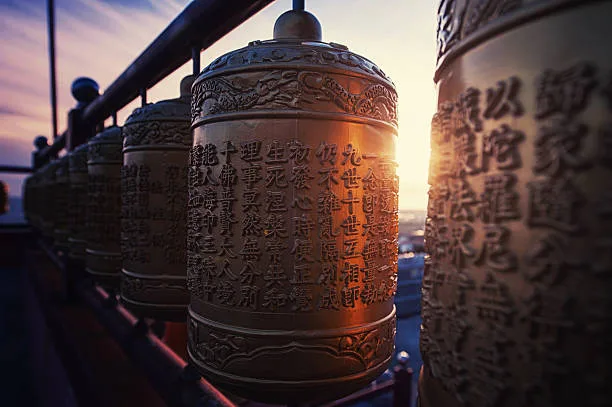
Some of the must-see natural attractions on the island include Hallasan National Park, which is home to South Korea’s highest peak, Mount Hallasan, and a variety of hiking trails through lush forests and scenic valleys. Another popular attraction is Seongsan Ilchulbong Peak, a volcanic crater that offers sweeping views of the surrounding seascape.
Jeju Island is also known for its stunning beaches, including Hyeopjae Beach, which boasts clear blue waters and white sand, and Jungmun Beach, which is popular with surfers and has a variety of seaside amenities.
Other natural wonders on the island include the Manjanggul Cave, a massive lava tube system that stretches for over 13 kilometers, and the Jeju Stone Park, which showcases the island’s unique geological formations and traditional stone culture.
The geological marvels of Seongsan Ilchulbong Peak
Seongsan Ilchulbong Peak, also known as Sunrise Peak, is one of the most iconic natural landmarks on Jeju Island, South Korea. The peak is a volcanic crater that formed about 100,000 years ago as a result of an underwater eruption. The crater is located on the eastern tip of the island and rises 182 meters above sea level.
What makes Seongsan Ilchulbong Peak a geological marvel is its unique shape and formation. The crater has an almost perfect circular shape, and its steep cliffs and jagged rocks are a testament to the powerful forces of nature that created it. The peak is also surrounded by a cluster of smaller volcanic cones, which are known as parasitic cones.
One of the most striking features of Seongsan Ilchulbong Peak is the beautiful view it offers of the surrounding area. Visitors can climb to the top of the peak and enjoy panoramic views of the ocean and the nearby islands. The peak is especially popular at sunrise, when the sun rises behind it, casting a warm glow on the surrounding landscape.
Aside from its geological wonders, Seongsan Ilchulbong Peak is also home to a diverse array of flora and fauna. The peak is covered in lush vegetation, including wildflowers and grasses, and is home to a variety of bird species.
Overall, Seongsan Ilchulbong Peak is a must-see destination for anyone visiting Jeju Island. Its unique geological features, stunning views, and natural beauty make it a true marvel of nature and a testament to the power and majesty of our planet’s geological processes.
The sparkling waters of Cheonjeyeon Falls
Cheonjeyeon Falls is a natural wonder located on Jeju Island, South Korea. The falls consist of three sections and are known for their crystal-clear, sparkling waters. The name Cheonjeyeon means “pond of heaven” in Korean and is a fitting description of this beautiful natural attraction. Visitors can enjoy a leisurely stroll through the lush forest surrounding the falls before arriving at the three-tiered waterfall.
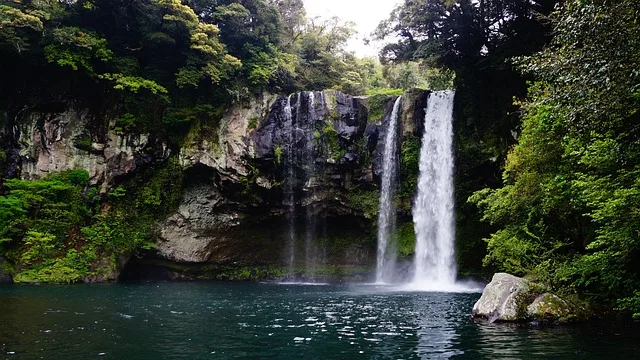
The falls are especially beautiful at night when they are lit up, creating a magical and romantic atmosphere. Cheonjeyeon Falls is a must-visit destination for anyone exploring the natural beauty of Jeju Island.
The beauty of the Oedolgae Rock
Oedolgae Rock is a stunning natural landmark located on Jeju Island, South Korea. The rock formation rises up from the sea and is surrounded by a picturesque landscape of cliffs and forests. The name Oedolgae means “lonely rock” in Korean, and the rock certainly lives up to its name, standing tall and solitary against the backdrop of the sea.
Visitors can enjoy a leisurely hike to the top of the cliff for breathtaking views of the surrounding area. The beauty of Oedolgae Rock is a testament to the natural wonders of Jeju Island and a must-see for anyone visiting the island.
The serene Hamdeok Beach
Oedolgae Rock is a stunning natural landmark located on Jeju Island, South Korea. The rock formation rises up from the sea and is surrounded by a picturesque landscape of cliffs and forests. The name Oedolgae means “lonely rock” in Korean, and the rock certainly lives up to its name, standing tall and solitary against the backdrop of the sea. Visitors can enjoy a leisurely hike to the top of the cliff for breathtaking views of the surrounding area. The beauty of Oedolgae Rock is a testament to the natural wonders of Jeju Island and a must-see for anyone visiting the island.
Discovering Jeju Island’s Cultural Heritage
Jeju Island is not only known for its stunning natural beauty but also for its rich cultural heritage. The island has a unique culture and history that has been shaped by centuries of isolation, trade, and conflict. Visitors can explore the island’s cultural heritage through a variety of experiences, including visiting traditional villages, museums, and cultural landmarks. Some of the must-see cultural attractions on the island include the Jeju Folk Village Museum, which showcases traditional Jeju Island architecture and daily life, and the Jeju Stone Park, which highlights the island’s unique geological formations and traditional stone culture. Discovering Jeju Island’s cultural heritage is a fascinating and rewarding experience for anyone interested in history and culture.

The ancient Jeju stone culture
The ancient Jeju stone culture is an integral part of the island’s rich cultural heritage. The island’s unique geological formations, including its volcanic rocks and basalt columns, have played an important role in shaping local customs and traditions. Stone was used for a variety of purposes, including building homes, fences, and tombs.

The Jeju Stone Park is a popular tourist attraction that showcases the island’s stone culture, displaying a variety of stone sculptures and structures. Visitors can also see traditional stone houses and learn about the ancient art of stone carving. The Jeju stone culture is a fascinating aspect of the island’s history and a must-see for anyone interested in traditional architecture and sculpture.
The artistic traditions of Jeju Island
Jeju Island has a rich artistic tradition that spans centuries. The island’s unique cultural heritage has contributed to the development of a distinctive artistic style that incorporates elements of folk art, shamanism, and Buddhism.
Visitors can explore the island’s artistic traditions through various experiences, including visiting art museums, attending traditional performances, and seeking out local artisans and craftspeople. Some of the most popular art forms on the island include traditional music, dance, and theater, as well as pottery, wood carving, and embroidery. The artistic traditions of Jeju Island are a vibrant and fascinating aspect of the island’s culture and a must-see for anyone interested in art and culture.
The fascinating folklore of Jeju Island
Jeju Island has a rich and fascinating folklore that is woven throughout the island’s history and culture. The island’s isolation from the mainland has allowed it to develop its own unique legends, myths, and superstitions. Many of these stories are passed down through oral tradition and involve supernatural beings, such as the haenyeo, or female divers, who are said to have the ability to communicate with the sea goddess. Visitors can learn about Jeju Island‘s folklore through various experiences, including visiting museums and cultural landmarks, attending traditional performances, and listening to local storytellers. The folklore of Jeju Island is a captivating and integral part of the island’s cultural heritage.
The unique architecture of Jeju houses
The architecture of Jeju houses is a unique and fascinating aspect of the island’s cultural heritage. Jeju houses are traditionally built with volcanic rock and feature distinctive thatched roofs made of grass or straw. The houses are designed to withstand the island’s harsh climate, with thick walls and narrow windows that keep out the wind and rain. Inside, the houses are typically divided into several rooms, each with a specific function, such as cooking, sleeping, and storage. Visitors can explore traditional Jeju houses at the Jeju Folk Village Museum and other cultural landmarks. The unique architecture of Jeju houses is a testament to the island’s ingenuity and resourcefulness.
Indulging in Jeju Island’s Foodie Delights
Jeju Island is a paradise for food lovers, offering a wide range of unique and delicious local specialties. The island’s cuisine is influenced by its geography and climate, with an emphasis on fresh seafood, vegetables, and fruits.

Some of the must-try dishes on the island include the famous black pork, which is raised on the island and known for its tender meat and distinctive flavor, and the haenyeo’s seafood specialties, such as abalone and sea urchin. Visitors can also indulge in a variety of street food, including hotteok, a sweet Korean pancake, and bungeoppang, a fish-shaped pastry filled with sweet red bean paste. Jeju Island‘s foodie delights are a must-try for anyone visiting the island.
Exploring the delicious seafood of Jeju Island

Jeju Island is renowned for its delicious seafood, which is a staple of the island’s cuisine. The island’s location in the middle of the ocean provides a rich variety of fresh seafood, including abalone, sea urchin, octopus, and squid, which are caught by the haenyeo, or female divers. One of the most popular seafood dishes on the island is the raw fish dish, hoe, which is served with a variety of dipping sauces and garnishes. Visitors can indulge in Jeju Island‘s seafood delights at local restaurants and markets, or even experience a haenyeo diving demonstration and taste the fresh catch of the day. Exploring the delicious seafood of Jeju Island is a must-do for any food lover.
The famous black pork of Jeju Island
The black pork of Jeju Island is a famous local specialty that is considered a must-try for anyone visiting the island. The pork comes from a breed of black pig that is unique to the island and known for its tender meat and distinctive flavor. The pigs are raised on the island and fed a diet of locally grown grains and vegetables, which contributes to their unique taste. Visitors can enjoy black pork in a variety of dishes, including barbecued pork belly, pork bulgogi, and pork soup. The famous black pork of Jeju Island is a culinary highlight of any trip to the island.
The sweetness and tartness of Jeju mandarins
Jeju mandarins are a beloved fruit on the island, known for their sweet and tart flavor profile. The mandarins are grown in the fertile volcanic soil of the island, which provides them with a unique taste and texture.

They are a popular ingredient in a variety of dishes, including salads, desserts, and drinks. Visitors can enjoy Jeju mandarins fresh from the tree at local farms or purchase them at markets throughout the island. The sweetness and tartness of Jeju mandarins are a delightful treat for any food lover and a must-try when visiting the island.
The unique flavor of Jeju tea
Jeju Island is home to a unique tea culture, with a variety of teas that are grown and produced on the island. The island’s volcanic soil and temperate climate create ideal growing conditions for tea plants, resulting in a distinctive flavor profile. Some of the most popular teas on the island include green tea, citrus tea, and omija tea, which is made from the berries of the magnolia tree. Visitors can enjoy Jeju tea in traditional tea houses, or even visit tea plantations and participate in tea ceremonies. The unique flavor of Jeju tea is a must-try for any tea lover and a delightful way to experience the island’s culture.
Experiencing Jeju Island’s Traditional Festivals and Celebrations
Jeju Island is a vibrant and colorful destination with a rich cultural heritage, which is celebrated through a variety of traditional festivals and celebrations throughout the year. One of the most popular festivals is the Jeju Fire Festival, which takes place in March and features torch-lit parades, fireworks, and traditional performances. Other festivals include the Jeju Horse Festival in May, which celebrates the island’s equestrian culture, and the Jeju Haenyeo Festival in October, which honors the island’s female divers. Visitors can also experience traditional celebrations, such as the Lunar New Year and Chuseok, which are marked by feasting, dancing, and other festive activities. Experiencing Jeju Island‘s traditional festivals and celebrations is a wonderful way to immerse oneself in the island’s rich cultural heritage and experience its unique traditions firsthand.
Bask in the beauty of the cherry blossoms on Jeju Island
Jeju Island is a stunning destination year-round, but during the spring season, the island comes alive with the beauty of cherry blossoms. The island’s mild climate and fertile soil make it an ideal location for cherry blossom trees to thrive, creating a breathtaking display of pink and white blooms throughout the island. Visitors can enjoy the cherry blossoms in a variety of locations, including parks, gardens, and along the streets of Jeju City. The beauty of the cherry blossoms on Jeju Island is a must-see for anyone visiting the island during springtime and a reminder of the island’s natural splendor.
Celebrate Jeju Island’s unique traditions during the Jeongwol Daeboreum Festival
Jeongwol Daeboreum is a traditional Korean holiday that celebrates the first full moon of the lunar calendar. On Jeju Island, the festival is marked by a variety of unique traditions, including the burning of a large bonfire to ward off evil spirits and the eating of a special dish made of nuts and rice. Visitors can also participate in traditional games, such as tug-of-war and arrow throwing, and watch performances of folk music and dance. The Jeongwol Daeboreum Festival is a wonderful opportunity to experience the island’s rich cultural heritage and celebrate its unique traditions.
Witness the splendor of the Jeju Fire Festival
The Jeju Fire Festival is an annual event held on the island in March, which celebrates the arrival of spring. The festival is marked by a variety of traditional activities, including torch-lit parades, fireworks displays, and the burning of a giant bonfire. Visitors can also enjoy traditional performances, such as drumming and dancing, and sample local cuisine. The Jeju Fire Festival is a vibrant and colorful celebration of the island’s culture and a must-see for anyone visiting Jeju Island in March.
Soak in the Jeju Haenyeo Festival
The Jeju Haenyeo Festival is an annual event held on the island in October, which celebrates the island’s diving women, known as haenyeo. The festival is marked by a variety of activities, including performances of traditional music and dance, exhibitions of haenyeo diving techniques, and a market selling freshly caught seafood. Visitors can also participate in hands-on experiences, such as diving and fishing. The Jeju Haenyeo Festival is a unique and fascinating celebration of the island’s culture and a must-see for anyone visiting Jeju Island in October.
Unwinding in Jeju Island’s Relaxing Spots
Jeju Island is a perfect destination to unwind and relax. Visitors can enjoy the island’s natural beauty at spots like Seongsan Ilchulbong, Mount Hallasan, and Cheonjeyeon Waterfall. The island also has many beaches, including Hyeopjae Beach, Jungmun Beach, and Hamdeok Beach, where one can soak up the sun and enjoy water activities. Other relaxing spots include the Jeju Olle Trail, Jeju Stone Park, and Jeju Teddy Bear Museum. Accommodation options range from luxurious resorts to cozy guesthouses and homestays. Jeju Island is a perfect place to escape the hustle and bustle of city life and unwind in a serene and peaceful environment.
Soothe your body and soul in the Jeju Jeolmul Natural Forest Resort
Jeju Jeolmul Natural Forest Resort is a perfect place to soothe the body and soul. The resort is located in the heart of Jeju’s pristine forests, offering a serene and peaceful environment. Visitors can enjoy a variety of outdoor activities, such as hiking, cycling, and forest bathing. The resort also has hot springs, saunas, and spas, providing a relaxing experience for guests. Accommodation options range from luxurious villas to cozy cabins, all designed with nature in mind. The Jeju Jeolmul Natural Forest Resort is a perfect place to escape the hustle and bustle of city life and unwind in a natural and tranquil setting.
Relax in the crystal clear waters of Udo Island
Udo Island is a beautiful destination located off the coast of Jeju Island, known for its crystal-clear waters and stunning beaches. Visitors can relax on the island’s beaches, such as Seobin Baeksa and Haumak, and enjoy water activities such as swimming, snorkeling, and kayaking. Udo Island also has many scenic spots, such as the lighthouse at the top of Gonghangsa Mountain and the Seobin Seawall. Accommodation options include guesthouses, pensions, and camping sites. Relaxing in the crystal-clear waters of Udo Island is a perfect way to escape the crowds and enjoy a peaceful and serene environment.
Join the slow and mindful village life in Seogwipo
Seogwipo is a charming coastal town on the southern coast of Jeju Island, known for its slow and mindful village life. Visitors can stroll through the town’s narrow alleys, lined with traditional houses and shops, and enjoy the local cuisine, such as black pork and seafood. Seogwipo also has many natural attractions, such as Cheonjiyeon Waterfall, Jeongbang Waterfall, and Jusangjeolli Cliff. Accommodation options range from luxurious resorts to cozy guesthouses and homestays. Joining the slow and mindful village life in Seogwipo is a perfect way to experience Jeju Island’s unique culture and traditions.
Enjoy the sunset at Gwakji Gwamul Beach
Gwakji Gwamul Beach is a beautiful destination on the western coast of Jeju Island, known for its stunning sunsets. The beach has clear blue waters and white sand, making it a perfect spot for swimming and sunbathing.
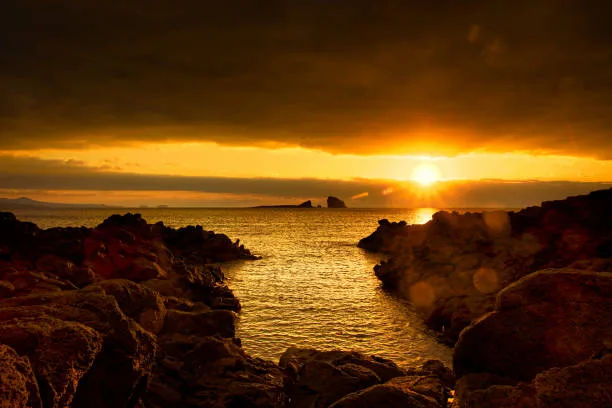
Visitors can also enjoy water activities such as kayaking and snorkeling. Gwakji Gwamul Beach is less crowded than some of the other beaches on the island, providing a peaceful and tranquil environment. Watching the sunset at Gwakji Gwamul Beach is a perfect way to end a day on Jeju Island.
Where to Stay on Jeju Island
Jeju Island offers a variety of accommodation options to suit different preferences and budgets. Visitors can choose from luxurious hotels, cozy guesthouses and homestays, camping and glamping sites, and traditional Jeju houses for a closer cultural experience. The island has many areas to stay in, such as Jeju City, Seogwipo, and Jungmun Resort, each with its own charm and attractions. Choosing the right accommodation is essential for a comfortable and enjoyable stay on Jeju Island.
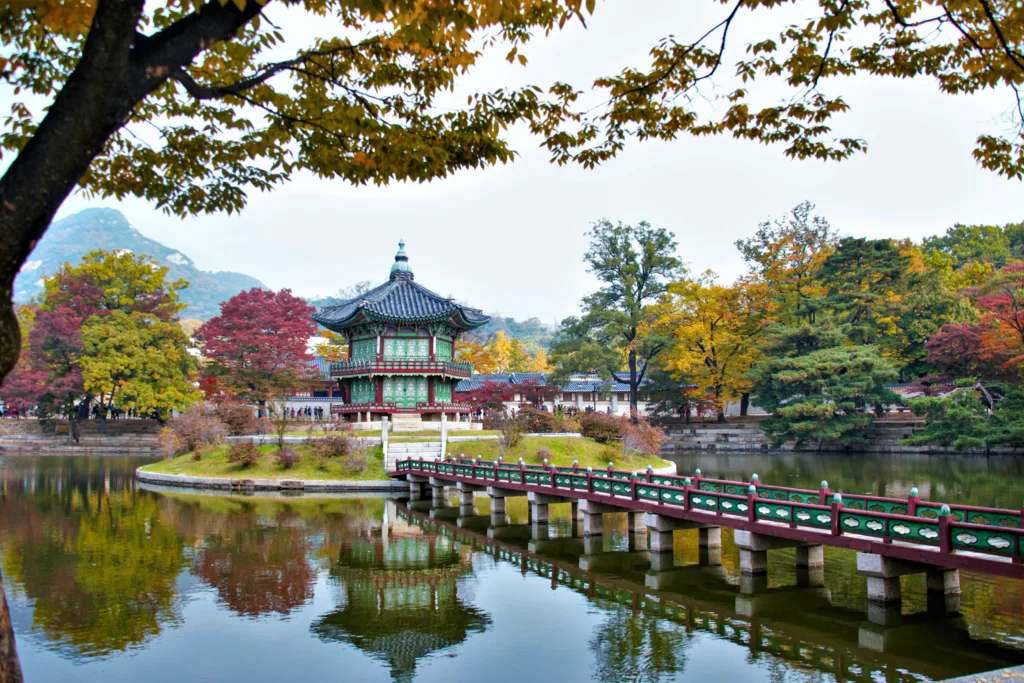
Luxurious hotels on Jeju Island
Jeju Island boasts many luxurious hotels to provide guests with a comfortable and upscale stay. The island’s luxurious hotels offer a range of amenities, including ocean views, private pools, spas, and fine dining restaurants. Some of the popular luxurious hotels include Shilla Jeju, Lotte Hotel Jeju, and Jeju Four Seasons Resort. These hotels provide guests with exceptional service, luxurious accommodations, and a unique Jeju Island experience. Choosing a luxurious hotel on Jeju Island is perfect for those seeking a lavish and indulgent vacation.
Cozy guesthouses and homestays on Jeju Island
Jeju Island offers many cozy guesthouses and homestays, providing guests with a comfortable and authentic experience. These accommodations are usually family-run and offer a homely atmosphere, giving visitors a chance to experience the island’s culture and traditions. Some of the popular guesthouses and homestays are located in Seogwipo and near the Jeju Olle Trail, providing guests with easy access to the island’s natural attractions. Choosing a cozy guesthouse or homestay on Jeju Island is perfect for those seeking a more intimate and personal experience.
Camping and glamping in Jeju Island
Jeju Island offers many camping and glamping sites, providing visitors with an opportunity to enjoy the island’s natural beauty in a unique way. Camping sites are usually located near beaches and forests, offering a peaceful and serene environment. Glamping sites offer a more luxurious camping experience, with amenities such as comfortable beds, private bathrooms, and hot tubs. Some of the popular camping and glamping sites include Jeju Glamping, Bagdad Cafe, and Sehwa Beach Camping Site. Choosing camping or glamping on Jeju Island is perfect for those seeking an adventurous and nature-filled vacation.
Traditional Jeju houses for a closer cultural experience
Jeju Island offers traditional Jeju houses, known as “hanok,” providing guests with a closer cultural experience. These houses are usually made of volcanic rock and have a thatched roof, providing a unique atmosphere. Some of the traditional Jeju houses have been converted into guesthouses, providing visitors with a chance to experience Jeju’s traditional way of life. Staying in a traditional Jeju house is perfect for those seeking an authentic cultural experience and a chance to immerse themselves in the island’s rich history and traditions.
How to Get to Jeju Island
Jeju Island can be accessed by air, ferry, or car. Visitors can fly to Jeju International Airport from Seoul and other major cities in South Korea. Ferries operate from Busan and other coastal cities in South Korea. The island can also be accessed by car from Jeolla and Gyeongsang provinces. Once on the island, visitors can rent a car, take a taxi, or use public transportation to get around. Choosing the right mode of transportation is essential for a comfortable and convenient trip to Jeju Island.
By air from Seoul and other cities in Korea
Jeju Island can be easily accessed by air from Seoul and other major cities in South Korea. Jeju International Airport is one of the busiest airports in Korea, with many domestic and international flights. Airlines such as Korean Air, Asiana Airlines, and Jeju Air operate frequent flights to Jeju Island. The flight time from Seoul to Jeju Island is approximately one hour. Flying to Jeju Island is a convenient and comfortable way to get there and is perfect for those with limited time.
By ferry from Busan or other coastal cities in Korea
Jeju Island can also be accessed by ferry from Busan and other coastal cities in South Korea. The ferry ride takes approximately 5-6 hours, providing visitors with a chance to enjoy the scenic views of the sea. Ferries operate daily, and the schedule varies depending on the season. Choosing to travel by ferry is perfect for those who want to enjoy a leisurely journey and experience the island’s beauty from the sea.
By car from Jeolla and Gyeongsang provinces
Jeju Island can also be accessed by car from Jeolla and Gyeongsang provinces. The journey involves taking a ferry from Mokpo or Yeosu to Jeju Island, which takes approximately 4 hours. Visitors can also drive to Jeju Island using the Jeju Island Expressway, which connects the island with the mainland. Going to Jeju Island is perfect for those who want to explore the scenic countryside and enjoy a road trip.
Best Time to Visit Jeju Island
Jeju Island can also be accessed by car from Jeolla and Gyeongsang provinces. The journey involves taking a ferry from Mokpo or Yeosu to Jeju Island, which takes approximately 4 hours. Visitors can also drive to Jeju Island using the Jeju Island Expressway, which connects the island with the mainland. Going to Jeju Island is perfect for those who want to explore the scenic countryside and enjoy a road trip. Spring, when the cherry blossoms are in full bloom summer when the weather is perfect for beach activities. Fall, when the foliage turns golden and red. Winter, is when Jeju Island takes on a serene, peaceful atmosphere. Tips for Traveling to Jeju Island. Pack wisely according to the season and prepare for the humidity of Jeju Island
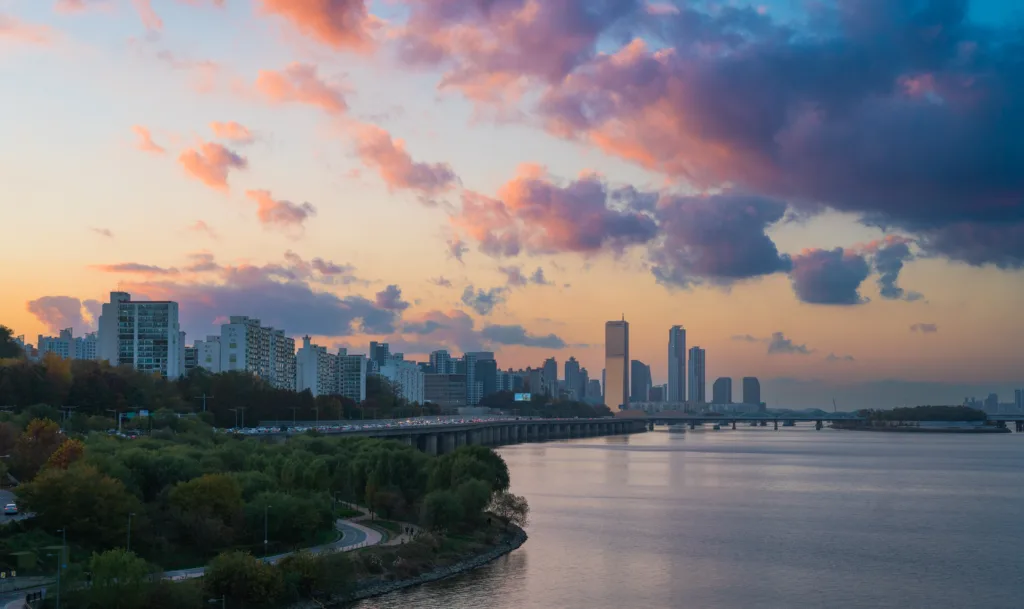
Learn basic Korean expressions for easy communication
Learning basic Korean expressions can be helpful for easy communication on Jeju Island. While many people speak English, knowing a few Korean phrases can make a big difference. Common expressions include “hello” (annyeonghaseyo), “thank you” (gamsahamnida), and “excuse me” (joesonghamnida). It’s also helpful to learn basic numbers and how to ask for directions. Knowing a few Korean expressions can enhance the travel experience and help visitors connect with the locals.
Respect the cultural and environmental heritage of Jeju Island
Conclusion
Jeju Island is a treasure trove of cultural and natural heritage that will keep you captivated throughout your journey.
Plan your trip to Jeju Island today and immerse yourself in the wonder and beauty of this Korean gem.
Read more about Traditional Korean Cuisine & its Cultural Significance
FAQs
What is Jeju Island?
Jeju Island is a small Island in southern South Korea, famous for its natural landmarks, traditional houses, folklore, and delicious food.
How do I get to Jeju Island?
One can get to Jeju Island by flight from Seoul, Busan and other major cities in South Korea. One can also take a ferry from Busan, Mokpo, and Incheon.
What is the best time to visit Jeju Island?
The best time to visit Jeju Island is from March to May and September to November.
What are the recommended places to visit in Jeju Island?
The recommended places to visit in Jeju Island are Mount Hallasan, Jeju Folk Village Museum, Seongsan Ilchulbong Peak, and Manjanggul Cave.
What are the traditional foods to try in Jeju Island?
The traditional foods to try in Jeju Island are black pork, fresh seafood, Jeju tangerines, hallabong chocolate, and Jeju mekju (beer).
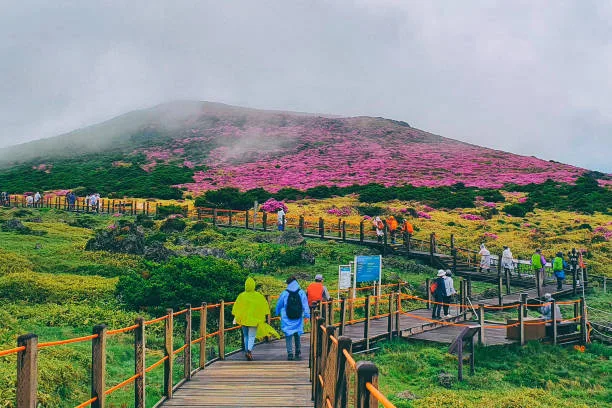

[…] Jeolla cuisine, also known as Jeollado cuisine, reflects the region’s agricultural abundance, diverse landscapes, and cultural heritage. In this blog, we will delve into the world of Jeolla cuisine, exploring its […]
Wow, incredible blog format! How long have you ever been blogging for?
you made running a blog glance easy. The entire look of your website is wonderful, as smartly as the content material!
You can see similar: https://velorian.top and
here https://velorian.top
Quality articles or reviews is the important to invite the users to go to see the website, that’s what this site is providing.
I saw similar here: najlepszy sklep and also here: sklep online
Hey there! I know this is somewhat off topic but I
was wondering if you knew where I could get a captcha plugin for my comment form?
I’m using the same blog platform as yours and I’m having trouble finding one?
Thanks a lot! I saw similar here: ecommerce and
also here: sklep internetowy